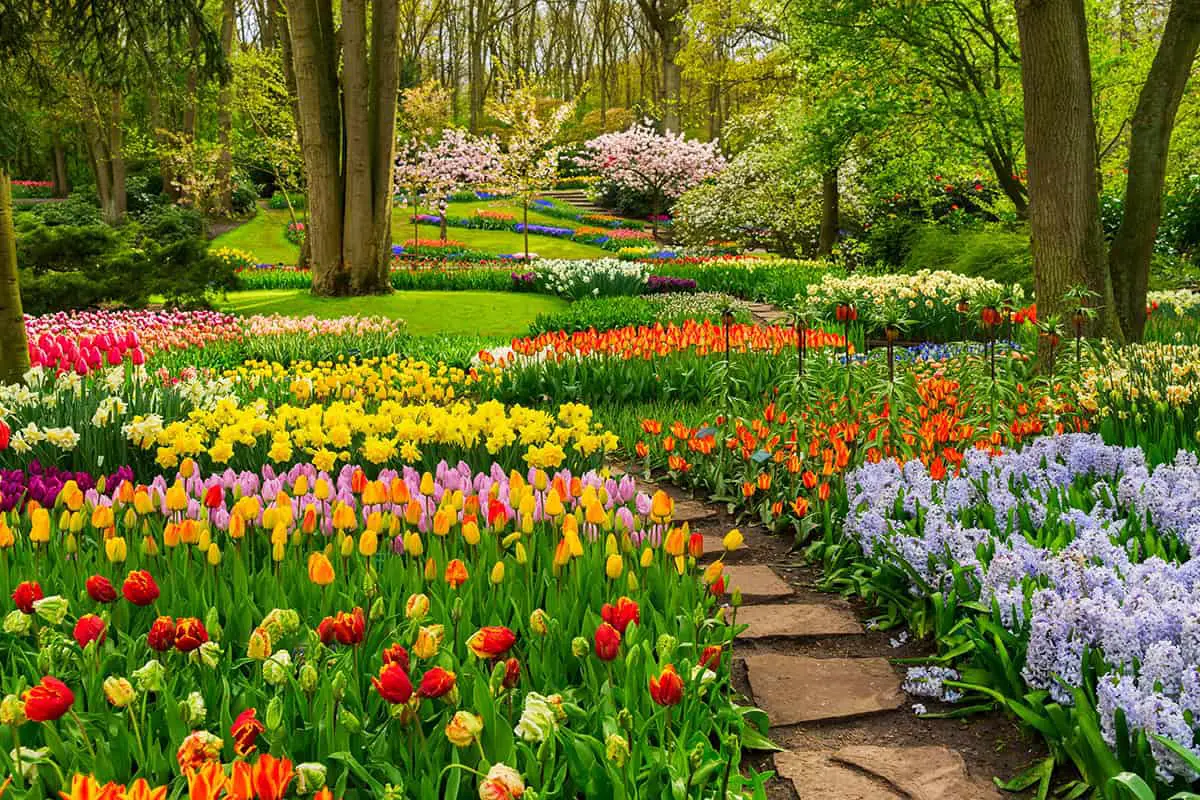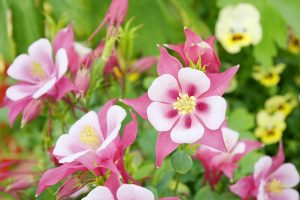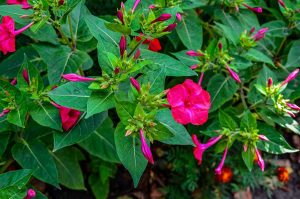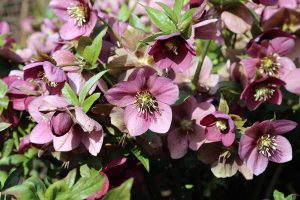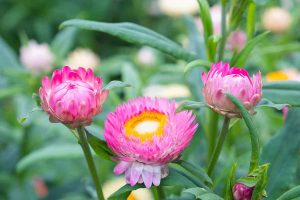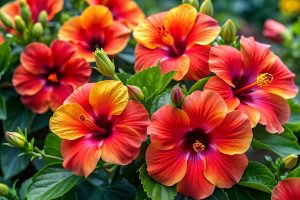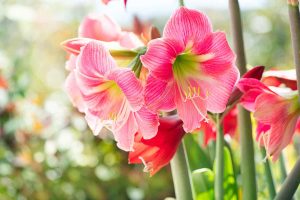Spring is in full bloom, and your garden is coming alive with vibrant colors. Walking outside, you notice the cheerful yellow of daffodils and the delicate pinks of tulips, signaling that May has arrived. This time of year brings a burst of energy and renewal as flowers in season during May brighten up your outdoor spaces. It’s the perfect moment to enjoy the beauty of nature and maybe even add a few more blooms to your collection. Without further ado, here is the list of flowers that bloom in May.
Roses

In May, your garden can become a showcase for roses. This flower is a classic symbol of elegance and beauty. Roses come in various types, each with unique qualities. You’ll find that shrub roses, hybrid teas, miniatures, and climbers are the prominent groups you can grow during this season.
Shrub roses offer a hardy option with winter resistance. Their blooms add lasting charm to your garden. Hybrid teas are famed for their form and wide color palette. They enhance gardens with their iconic, long-stemmed beauty. Miniature roses are perfect for small spaces. They deliver a burst of color despite their compact size.
Climbing roses create vertical interest. They require structures like arbors for support. Keep in mind that these roses need at least six hours of sunlight each day. This exposure is crucial for their health and bloom production.
When planning your rose garden in May, consider the spacing. Hybrid teas need about 2-1/2 to 3 feet apart. For vigorous climbers, plan for 8 to 10 feet of space. Your efforts will reward you with vibrant blossoms that enliven your garden space.
Peonies
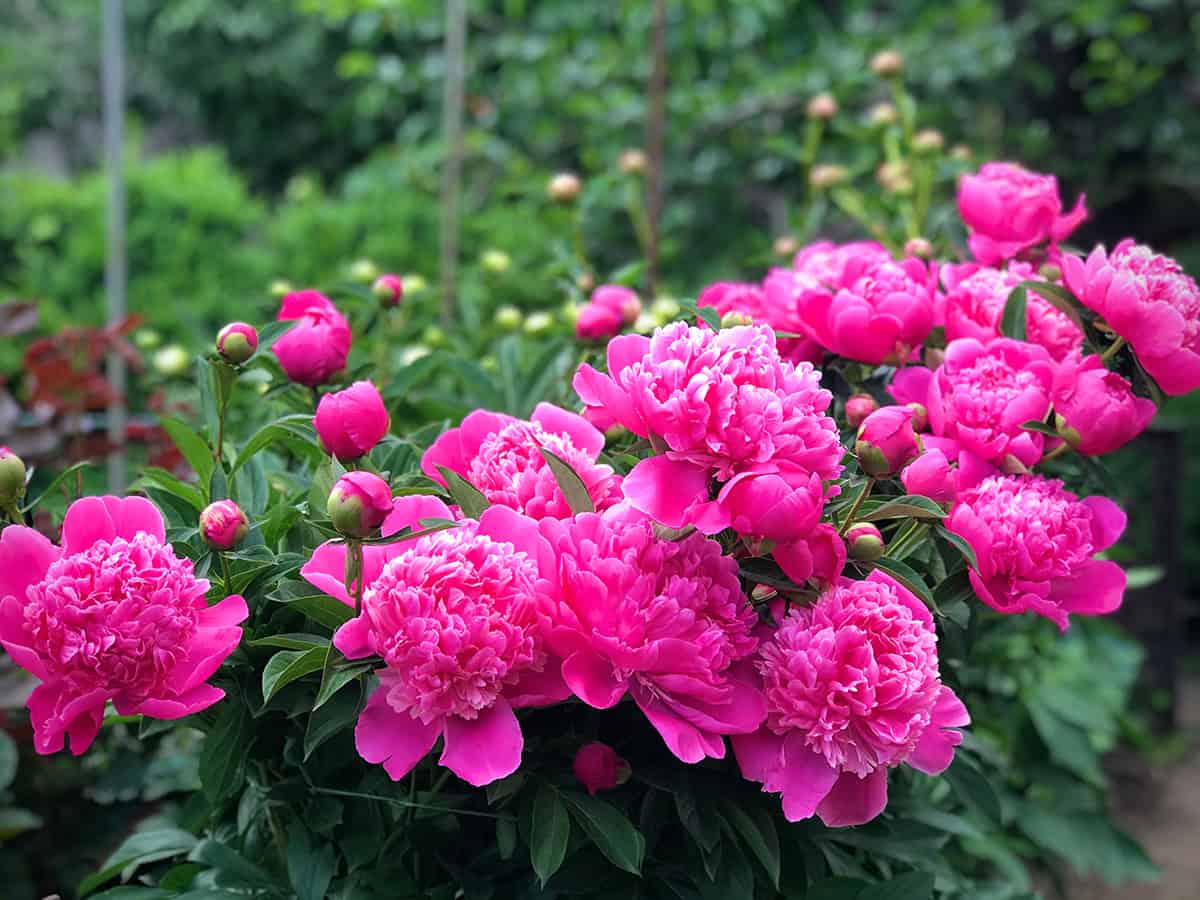
In May, your garden can become vibrant with peonies. Recognized for their lush blooms and rich fragrance, peonies add a touch of elegance to any landscape. They are perennials, meaning you can enjoy their splendor year after year. Colors range from white to yellow and deep red, giving you a variety of hues to enhance your outdoor space.
Planting different cultivars extends their bloom time. With early, mid-season, and late flowering varieties, you can have continuous peony bloom for up to eight weeks. Such planning results in a longer season of enjoyment.
Peonies thrive in well-drained soil with a pH of 6.5 to 7.0. To achieve the best growth, you might need to adjust the soil pH. These flowers prefer a spot in your garden that receives full sun to light shade. Ensure they have adequate space, as crowded plants tend not to bloom well.
When you plant peonies, consider it a long-term investment for your garden. They can flourish without being disturbed for many years. Your maintenance efforts post-bloom focus on preparing the plants for the next spring.
Tulips
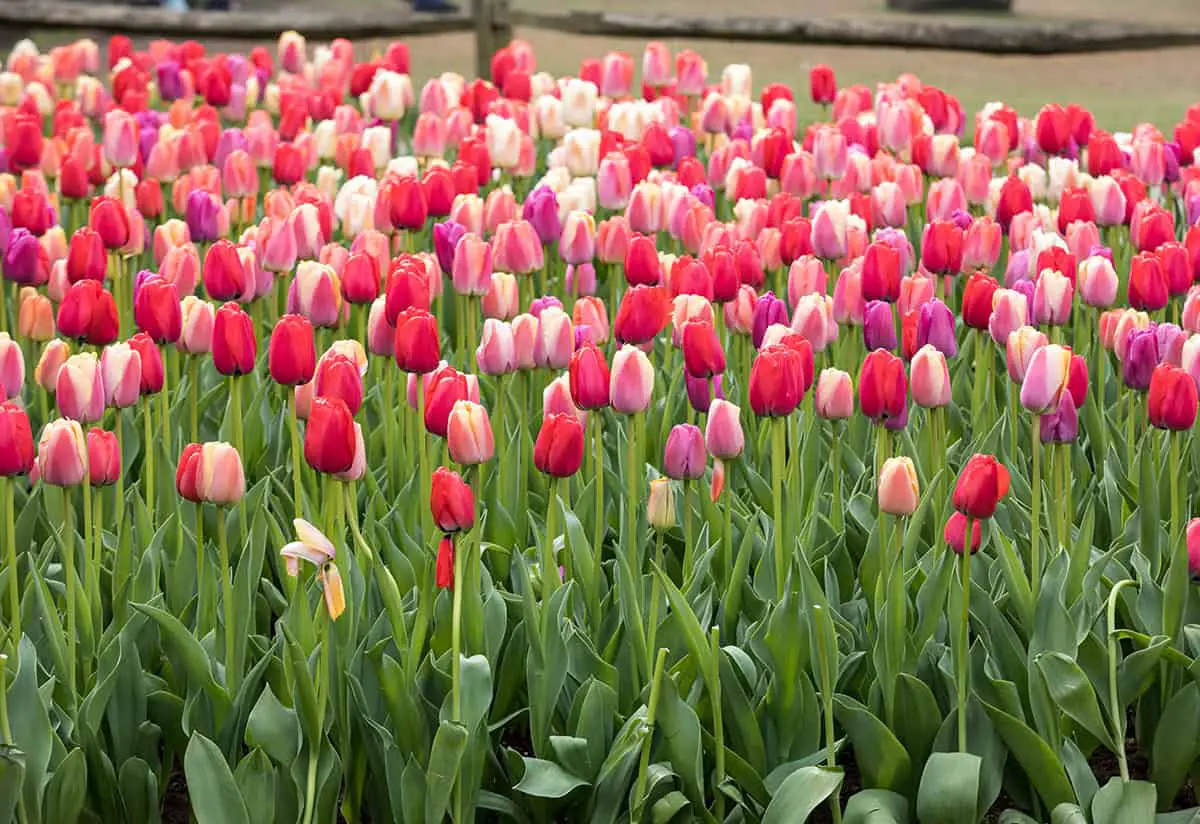
May is the perfect time for you to enjoy the vibrant beauty of tulips in full bloom. These flowers are classic symbols of spring. You’ll discover tulips in a medley of colors ranging from red to yellow and purple. Each hue brings its own unique touch to gardens and floral arrangements.
When you plant tulips, choose a sunny spot in your garden. These bulbs prefer well-drained soil and fare best with plenty of light. You can plant them in the fall and by May, they grace your space with their colorful presence.
For the best display, cluster tulip bulbs in groups. This method creates a more striking visual impact. While some treat tulips as perennials, many gardeners in colder regions plant new bulbs each year.
With proper care, you can enjoy your tulips throughout May. When the flowers fade, you can decide whether to treat them as annuals or try to cultivate them for another year. Tulips do not generally require much maintenance, which makes them a favored choice for both novice and experienced gardeners.
Remember, the size of the tulip bulb influences the flower’s bloom. Larger bulbs often lead to more impressive flowers. If you wish to prolong the life of your tulips, consider adding a layer of mulch to regulate soil temperature and retain moisture.
Lilacs
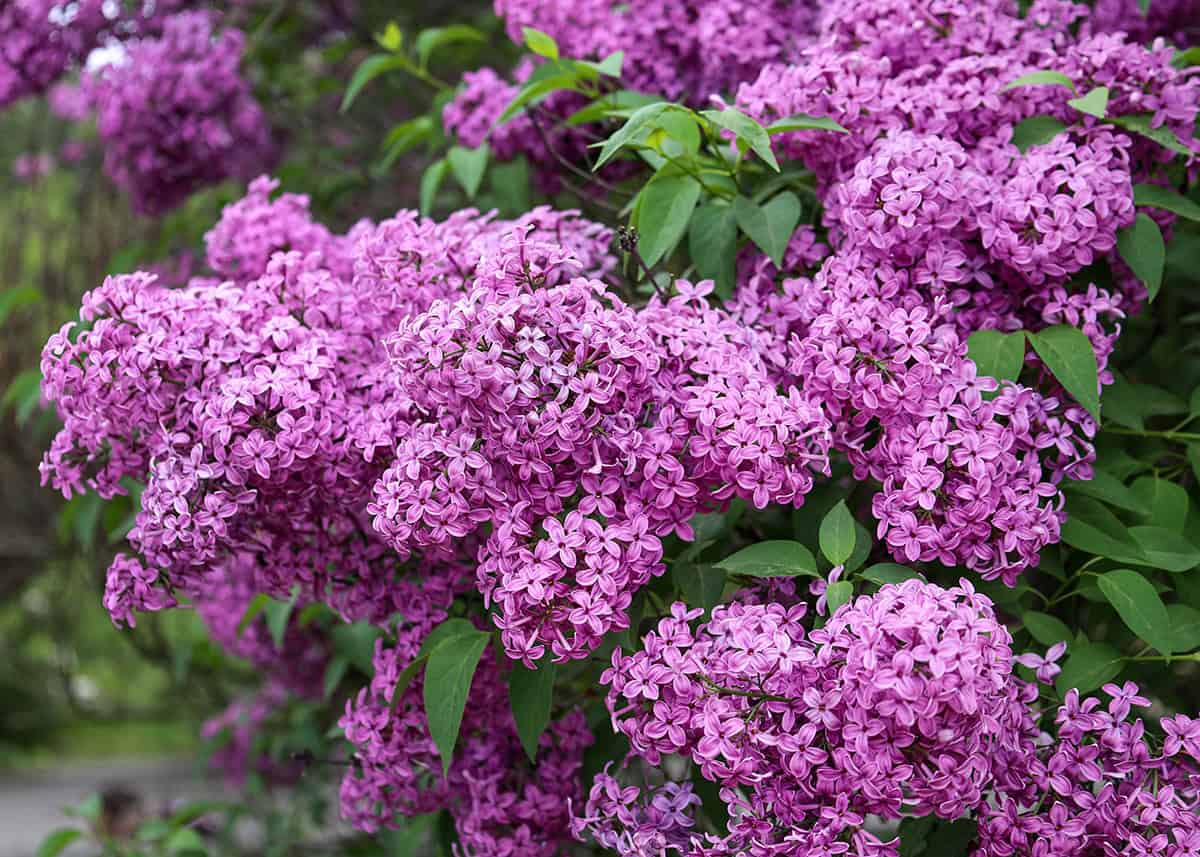
Lilacs herald the warmth of May with their vibrant blossoms. You’ll notice these shrubs by their heart-shaped leaves and sweet aroma. They are a traditional choice in many gardens. When you plant lilacs, choose a spot in full sun for the best flower display.
Flower hues vary from purple to white and pink. If you live in cooler regions, your lilacs will likely bloom in May. Warmer areas may see flowers earlier. You won’t need to fuss over them frequently, as they’re quite low-maintenance.
Ensure your soil is well-drained and slightly acidic to alkaline. This will help your lilacs thrive. With proper care, these hardy shrubs can become a long-lived addition to your landscape. Remember, it may take a few years for your lilacs to establish, but the wait is worth it. Once settled, the flowers can grace your garden for decades.
The common lilac is especially popular. This variety can reach up to sixteen feet in height. Keep in mind that over-fertilizing can lead to lush leaves and fewer blooms. Be measured in how much you feed these plants.
If problems arise, they are often fungal or bacterial. Look out for wilting or browning of leaves. Managing these issues quickly will ensure your lilacs remain a showstopper during their blooming period.
Irises
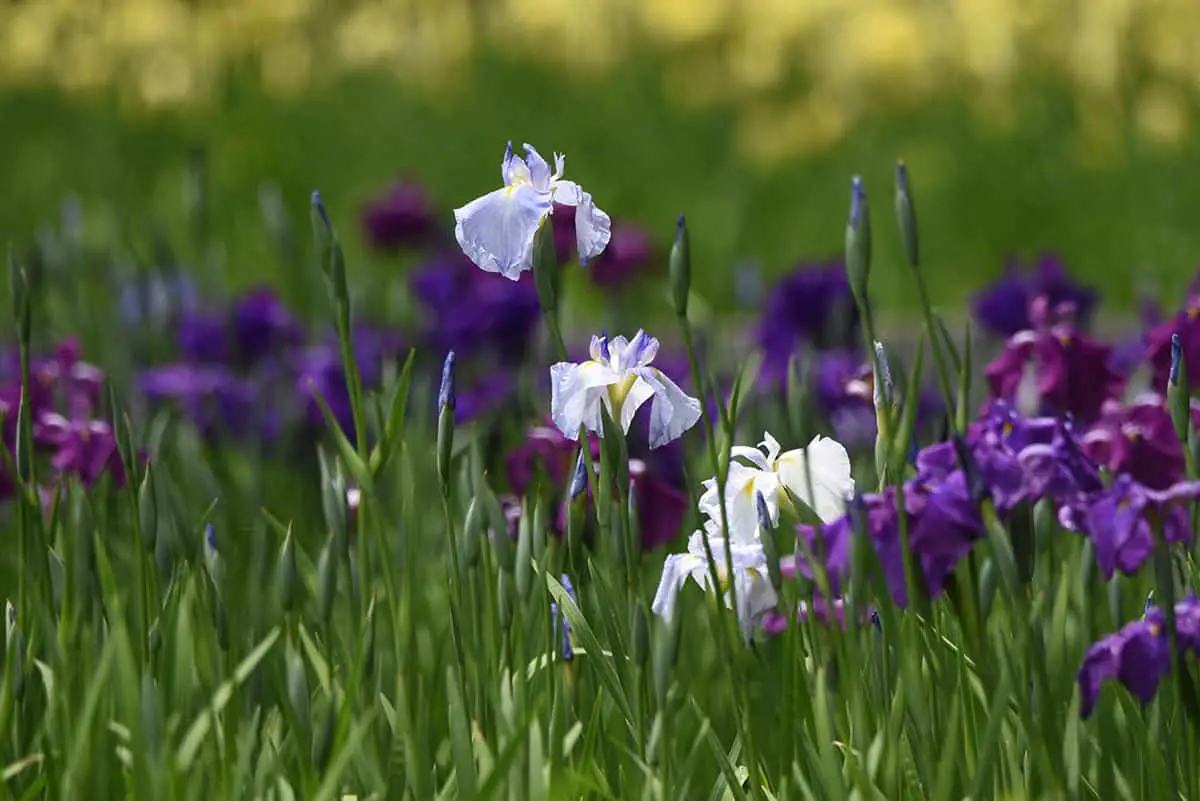
In May, your garden can burst into color with irises. These flowers bring a variety of shades to your outdoor space. Irises are known for their distinctive petals and come in many colors. The German bearded iris, for example, is popular for its large blooms and range of hues.
Some irises bloom as early as May, like the bearded iris. These plants are typically 2 to 3 feet tall. They not only offer large flowers but also a rainbow spectrum of colors. The dwarf iris may bloom earlier, adding an early touch of color.
Irises thrive in well-drained soil and full sunlight. To see them flourish, plant their bulbs or rhizomes properly. This ensures a stunning display when May arrives. For vibrant blooms, consider adding the Dutch iris to your garden. They prefer sun or light afternoon shade.
Alongside bearded irises, other types like the Siberian iris also enhance gardens in May. They feature grass-like leaves and can grow from 12 to 40 inches tall. The Siberian iris prefers moist, fertile soil, making it a beautiful addition to your May garden.
Geraniums
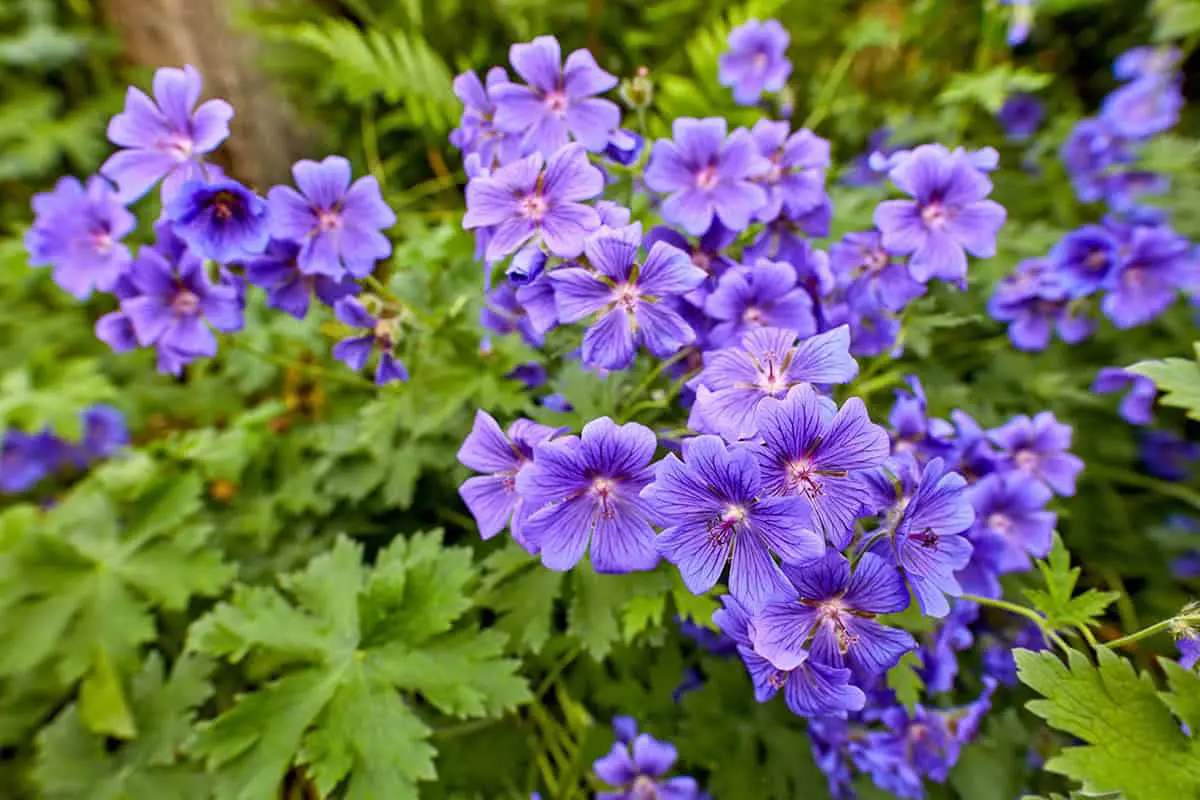
May welcomes the flowering season of geraniums. As you plan your garden, consider these vibrant bloomers. Geraniums thrive in full sun, requiring at least six hours of direct sunlight daily. They are adaptable and can tolerate partial shade, making them versatile for various garden spots.
Your garden’s soil should be well-drained and fertile to support geranium growth. These plants enjoy moist conditions, but ensure the soil is not overly wet. Overwatering can attract pests like snails and lead to diseases that harm the plants.
Geraniums come in many colors, enhancing the beauty of your spaces with their red, pink, purple, or white hues. You can plant them in outdoor beds or as container plants, where they add a splash of color to patios or balconies. Deadheading, or the removal of spent blooms, encourages continuous flowering throughout the season.
In frost-free regions, geraniums can survive as perennials. This means you can enjoy their beauty year after year with proper care. If you live in a region with harsh winters, consider geraniums as annuals or move them indoors to protect them from the cold.
For a successful geranium display in May, plan your planting after the last frost. This ensures your plants will have a robust start without the risk of frost damage.
Dahlias
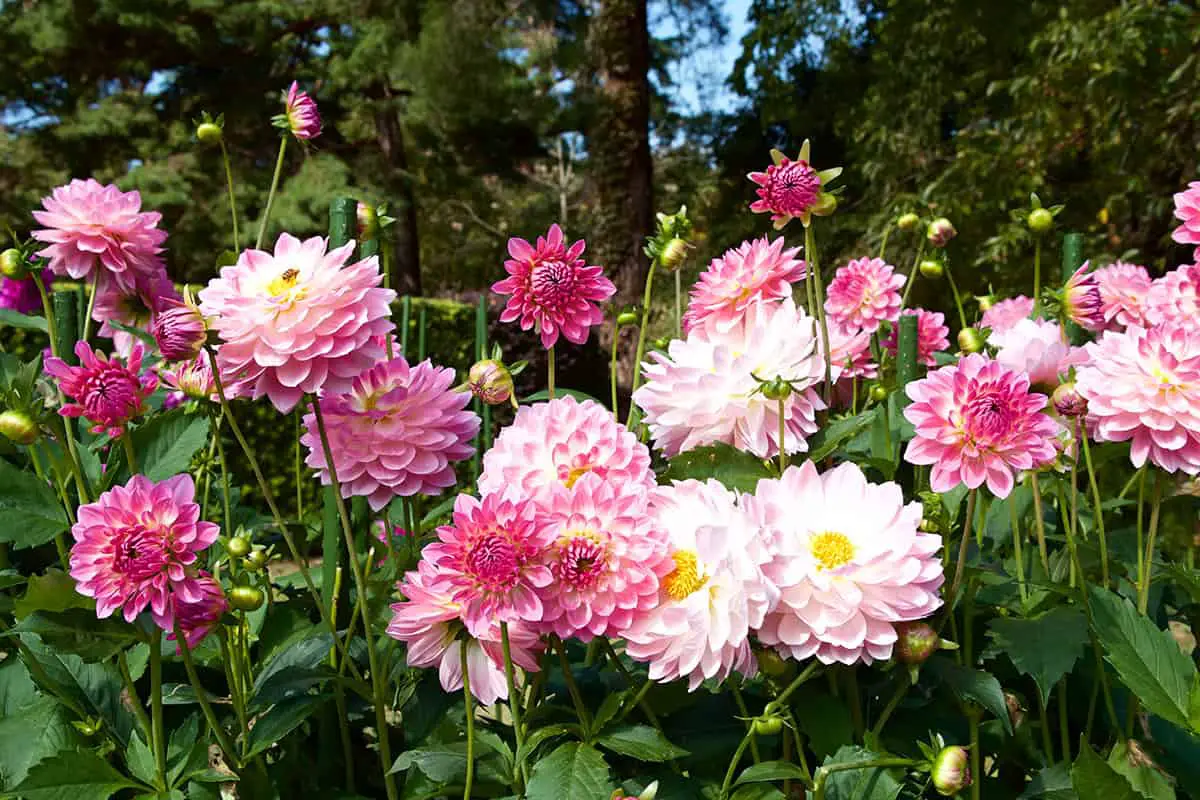
In May, you’ll find dahlias are just starting their bloom period. These flowers add vibrant colors to gardens. They range widely in size and shape, giving you a plethora of options for your space. Known for their unique patterns, dahlias boast hues of red, pink, yellow, and more.
Plant dahlias in well-draining soil to ensure their best growth. They need sunlight but can thrive with afternoon shade in hotter climates. You’ll need to water dahlias regularly, keeping the soil moist but not soggy.
Their blooming can extend into late summer with the right care. Deadheading encourages further blooms and keeps your dahlias vibrant. Dahlias can grow from one to six feet tall, so you might need to stake the taller varieties.
If you live in a colder climate, remember dahlias are sensitive to frost. In areas below USDA Zone 7, lift the tubers in fall to store them over winter. This method keeps your plants ready for the next season.
Hyacinths
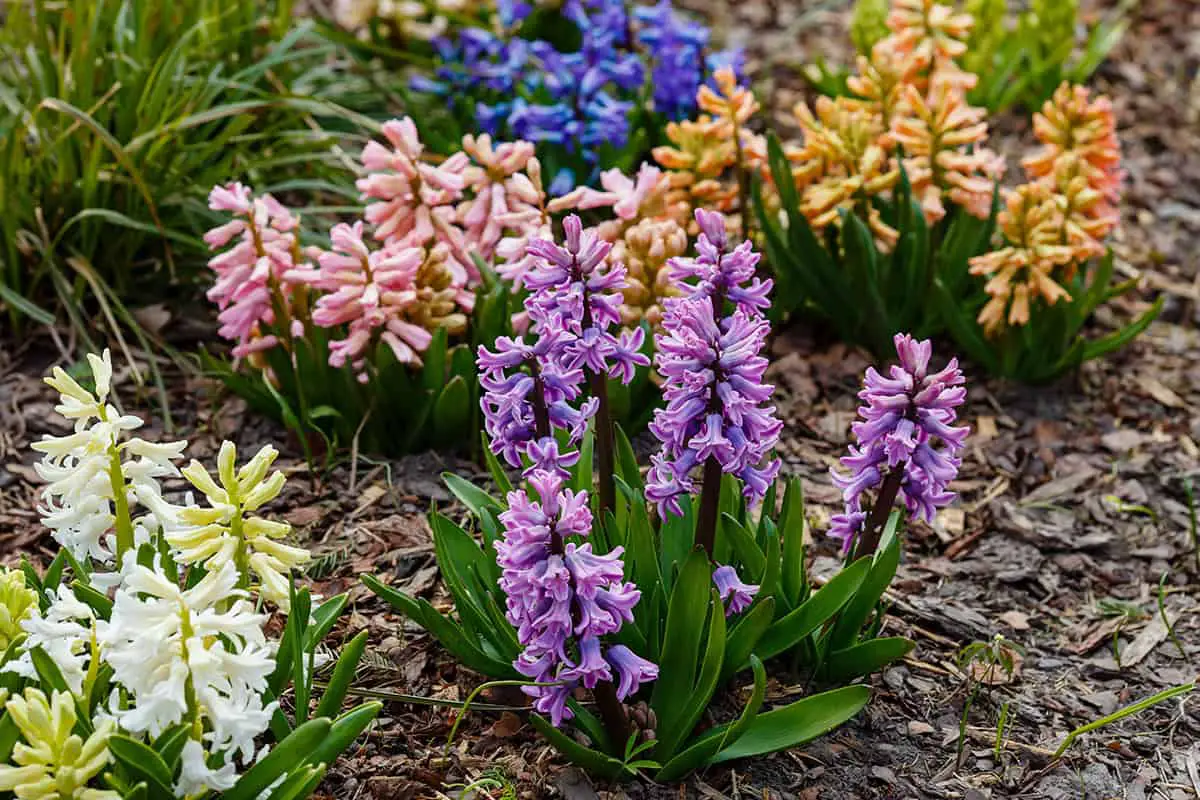
Hyacinths stand out in May with their vibrant blooms and sweet fragrance. If you’re considering adding these flowers to your garden, you’ll be choosing from a variety known for its striking colors and pleasant scent. They typically grow between 6 to 12 inches tall, making them ideal for both borders and container gardening.
You’ll find hyacinths in various shades such as pink, blue, white, and purple. They’re known to attract pollinators like bees, which is beneficial for your garden’s health. To plant hyacinths, it’s advisable to place them in a spot with ample sunlight and well-draining soil.
When enjoying their blooms, you may notice each flower’s star-shaped petals. These form dense clusters that resemble grape clusters. Hyacinths are perennial; with proper care, they’ll return each spring. They can be enjoyed outdoors or brought indoors as cut flowers.
Poppies
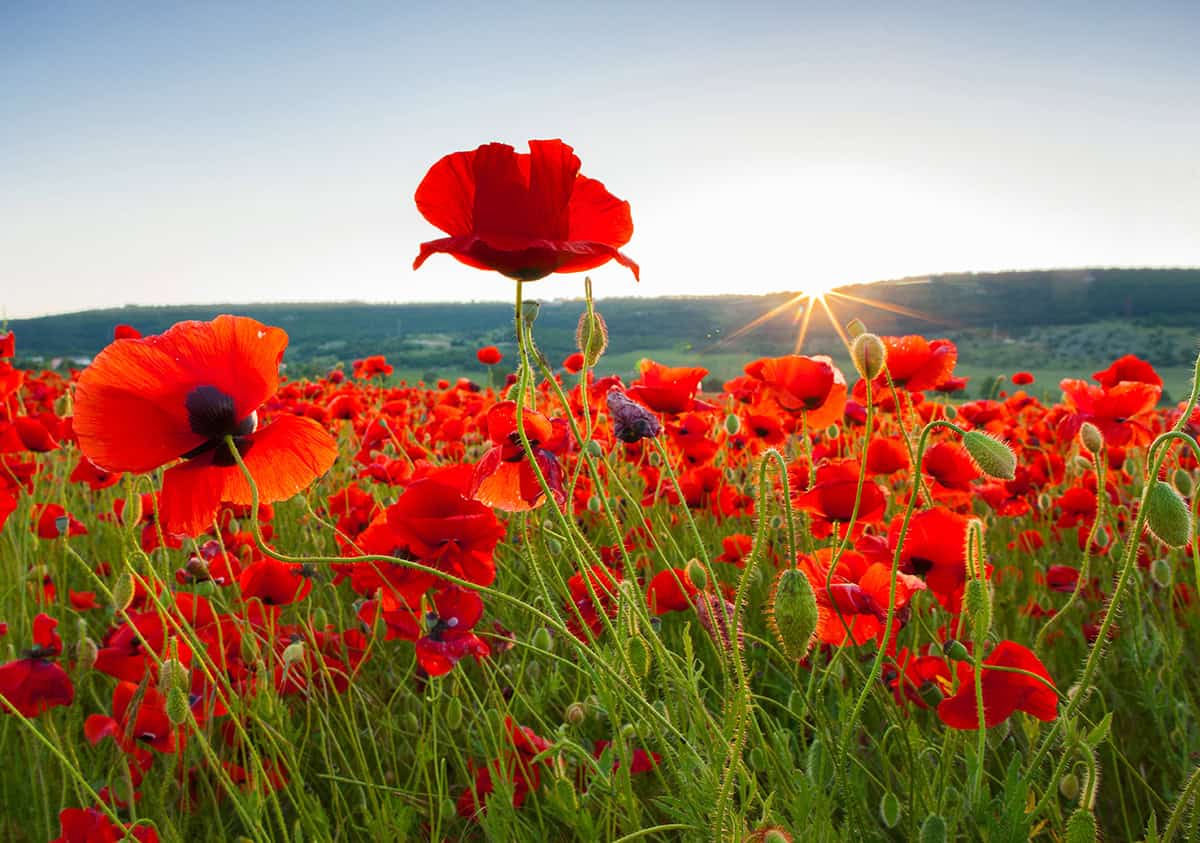
Poppies are vibrant and sought after for their springtime blooms. They come into season in May, offering a burst of color to your garden. With their fern-like blue-green leaves, California poppies grow to around 18 inches and thrive even in dry conditions. However, they appreciate weekly waterings.
You can identify the Celandine poppy by its yellow flowers and attractive pinnate, lobed leaves. This species prefers moist soil and will reach 1 to 1.5 feet in height, spreading comfortably in your garden space.
For a pop of color, Oriental poppies are a go-to. They stand out at 18 to 36 inches tall with single flowers in shades of orange, scarlet, pink, or white. These poppies bloom in early summer and favor full sun exposure, as detailed by Illinois Extension.
When planting poppies, pick a spot with full sun and well-drained soil. Sow the seeds in early spring, and cover them with a thin layer of soil. Keep the soil moist to encourage germination. Then, thin the plants as needed, aiming for 6 to 8 inches apart to give them space to flourish.
Bluebells
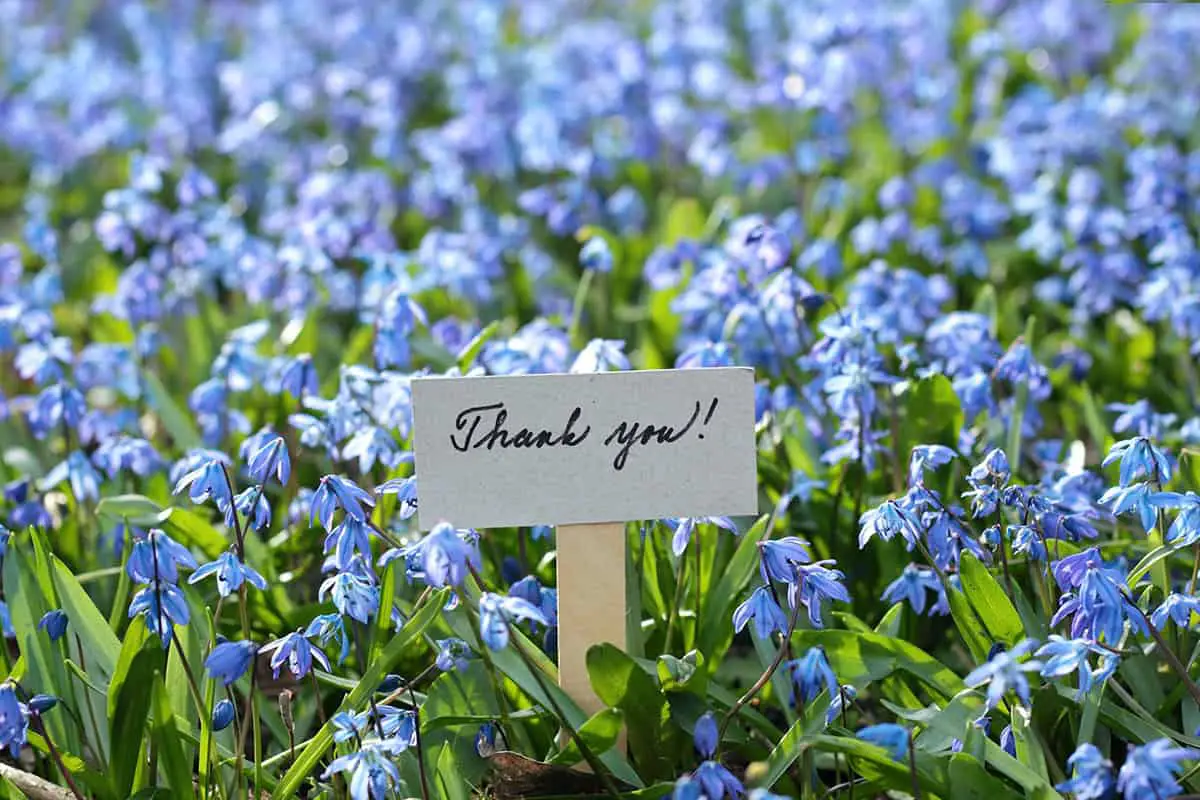
In May, you will find Virginia bluebells in bloom. These perennial plants dazzle with their clusters of blue flowers. They typically stand between twelve to thirty inches tall. Their early season presence is brief, so enjoy their blooms in spring gardens or wooded areas.
Virginia bluebells begin with pink buds. As the flowers mature, they display a striking blue hue. This color change results from the pH levels in the plant’s cell sap. More acidic soils can intensify the blue color compared to neutral conditions.
You can easily include Virginia Bluebells alongside other perennials. They complement yellow daffodils or pink tulips well. After blooming, they will go dormant, leaving space for summer flowers.
The charm of Virginia bluebells extends beyond their looks. These plants provide cover for emerging native insects in early spring. Even white-tailed deer are known to browse their foliage. If you have a shade garden, bluebells add remarkable color in early spring.
